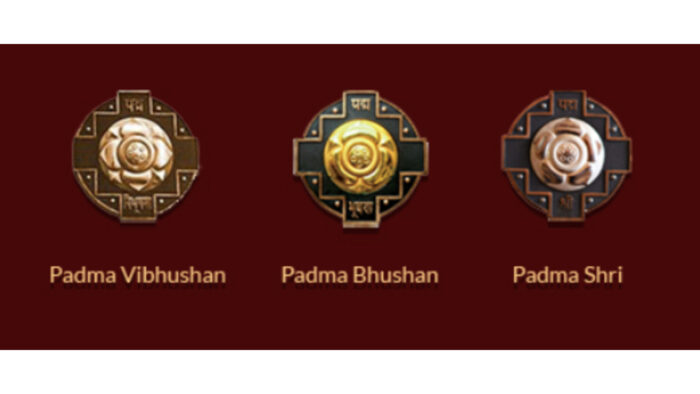Ever since its institution in 1954, the Padma awards have recognized individuals from India and across the world for their contributions to this country and public life at large. This includes over 200 non-Indians from more than 50 countries such as the US, France, Serbia, Kazakhstan, Singapore and Bhutan. However, under the current government, there has been a clear shift from the past in terms of selecting both the local and the international recipients of India’s highest civilian awards. Looking at the list of international recipients can help understand the government’s diplomacy of awards and its soft power outreach.
By honouring academics and artists, the Padma awards convey India’s cultural and civilizational influence across the world. Several scholars have studied Indian Knowledge System and shared its wisdom to geographies beyond India. One of them is Nicholas Kazanas from Greece who is a Sanskrit scholar and an authority on Vedic civilization. Kazanas’ studies establish “that the ancient cultures of Hittites, Greeks, Italians, Germanic peoples, Celts, Slavs and Baltic peoples…originated in a much fuller and richer form of the Vedic civilisation.” His work reinstates the cultural and linguistic commonalities between India and the West, tracing roots to Sanskrit. Some other scholars who have dedicated their lives to study and spread of Indian civilizational thought include Gloria Ariera, a teacher of Vedanta in Brazil, and the French Indologist Prof Michel Danino. Conferring the Padma Shri to Kazanas in 2021, Ariera in 2020 and Danino in 2017, is an acknowledgement of extensive works undertaken by these scholars to corroborate India’s wealth of knowledge and its civilizational connect with the world.
The list of this year’s recipients also includes many lesser-known performing and visual artists who have contributed significantly in preserving and promoting Indian culture in their countries. Wayan Dibia, an Indonesian Balinese dancer and an author received the Padma Shri this year. India’s civilizational influence is evident in Indonesian performing arts, literature and architecture. Ramayana and Mahabharat continue to be a central theme of these art forms and Balinese dance is a beautiful representation of the same. Peter Brook, also conferred with Padma Shri this year, took Mahabharata to the stage and screens of the US, Europe and other parts of the world. For this nine-hour stage production, Brook was widely acclaimed for his “aesthetic vision and creating new dimensions in theatre by bringing to life this huge humanistic work”.
Closer in the neighbourhood, Sanjida Khatun, an exponent of Rabindra Sangeet in Bangladesh was honoured with the Padma Shri as well. The award also comes at a time when Bangladesh celebrates the 50th Anniversary of its Liberation War. Khatun was instrumental in bringing Bengali artists together during the freedom movement, and even before that, to stand up against the then West Pakistan’s oppressive regime. Thus, the timely honour to Khatun as well as to Bangladesh Liberation War fighter Lt. Col. (Retd.) Quazi Sajjad Ali Zahir was also a reminder of India’s commitment to supporting a peaceful and harmonious neighbourhood.
Lastly, the Padma awards have projected New Delhi’s strategic interest and its increasing diplomatic clout. This was evidenced with the former Japanese Prime Minister Shinzo Abe being conferred the Padma Vibhushan this year. Abe is regarded as the architect of ‘Free and Open Indo-Pacific,’ a concept he first articulated in 2007 in the Indian Parliament. Since then, this idea has been central to foreign policy considerations and conduct of India and other major powers. India, under the leadership of PM Modi has further taken to a more proactive role as a security provider and a leader in the region.
In the wider context of Indo-Pacific, New Delhi has also been an advocate of “ASEAN Centrality.” The concept owes its importance to the geostrategic positioning of the 10 ASEAN Nations in the Indo-Pacific as well as increasing Chinese presence. One of the examples of this increased engagement and significance attached to ASEAN was when the political heads of all 10 ASEAN nations were invited for the Republic Day celebrations in 2018. It was an unprecedented move to demonstrate India’s foreign policy priorities towards its immediate and extended South-eastern neighbourhood. In the same year, Padma Shri was conferred to citizens from all ten ASEAN nations, for their role in strengthening cultural, trade or diplomatic relations between India and their country.
India’s civilian honours have long projected its diplomatic relations with the world. However, the past few years has seen a break in tradition in two major ways. First, it recognizes the most deserving and committed individuals to India’s culture and ethos residing within or outside the country. This exemplifies India’s soft power prowess and the influence our civilization can bear on individuals. Second, Padma awards highlight India’s strategic and diplomatic considerations. They acknowledge the pivotal role international leaders have played in strengthening bilateral relations between India and their country. As India progresses on its journey of becoming a superpower, such recognitions also serve as reminders of Indian values of reciprocation, respect for sovereignty and responsible leadership at the global stage.





